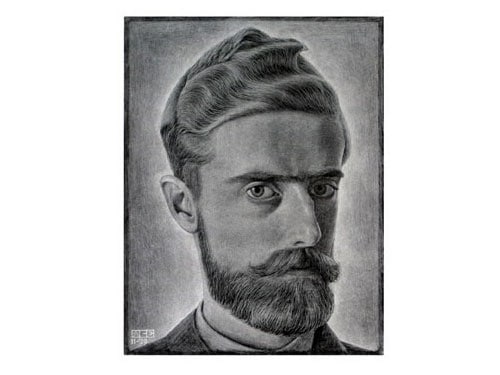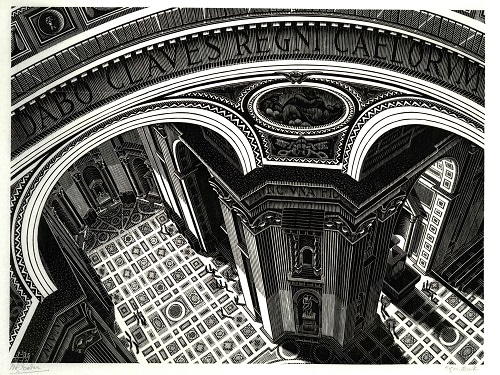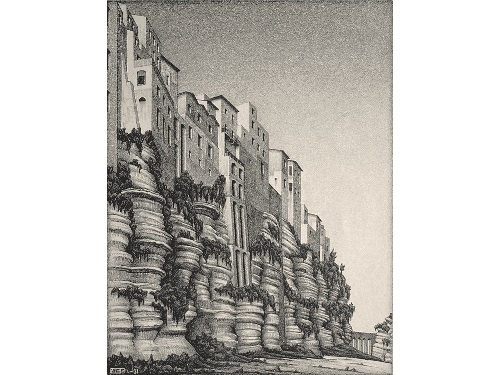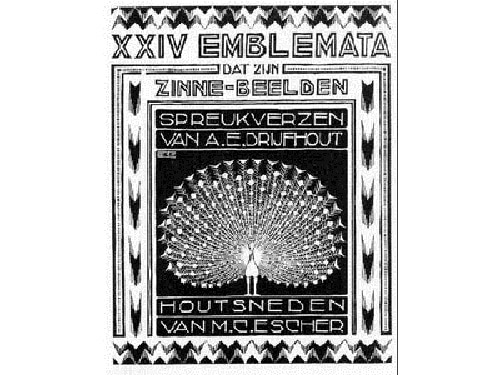JOURNEY TO INFINITY: ESCHER’S WORLD OF WONDER
M.C. Escher's early works were inspired by Art Nouveau, a popular art style originated in the late 19th century in Europe. He also had a reverence for nature and created numerous prints representing realistic drawings of insects and flowers.
His journeys in Italy between 1921 and 1935 inspired him to extensively depict its countryside.
The characteristics of M.C. Escher’s work come from his meticulous observation of nature and his passion for the geometrical regularity he noticed in the world surrounding him.

M.C. Escher
Self-portrait
1929
Lithograph
The Liberty Collection, USA
M.C. Escher first learned to make lithographs in 1929. Escher made self-portraits throughout his career, experimenting with various printmaking techniques that included linoleum cut, woodcut and lithography.


M.C. Escher
Inside St. Peters
1934
Woodcut
Private Collection, USA
M.C. Escher positioned himself at the highest gallery of the dome of St. Peter's Basilica in Rome, Italy in order to draw this specific perspective of the edific.

M.C. Escher
Tropea, Calabria, Italy
1931
Lithograph
Private Collection, USA
From 1927 to 1935, M.C. Escher travelled each spring from Rome to southern Italy, to make sketches and drawings of landscapes. He found the cliffside towns in Calabria particularly inspiring.


M.C. Escher
XXIV Emblemata, Second title page
1931
Woodcut
Private Collection, USA
XXIV Emblemata is a book printed in 1932, illustrated by M.C. Escher with woodcut engravings. It contains 24 maxims written by his friend G. J. Hoogewerff, then director of the Dutch Institute of Culture in Rome.
The proverbs were written in Latin, while the commentary was in Dutch. They refer to the tradition of Flemish maxims, as well as to the Emblemata published by Andrea Alciati, Italian writer of the 16th century.
